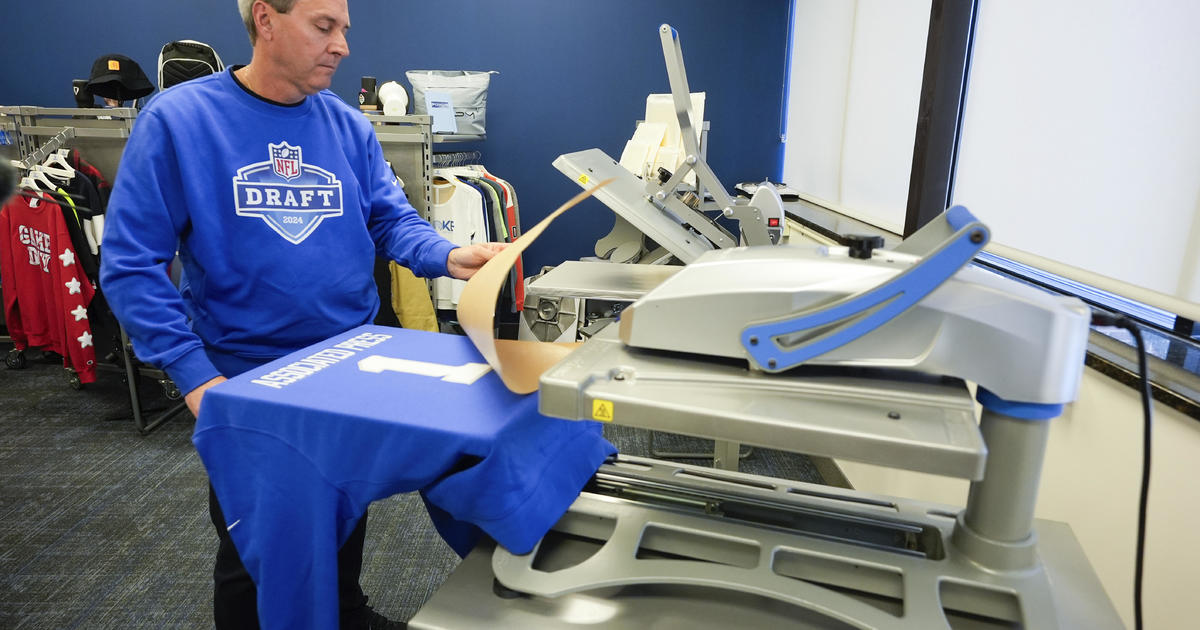Lansing: Capital Of Michigan's High Tech, Too
All good things, as they say, come to an end, but not all good things come to a good end.
Well, let me tell you, the amazing technologies I saw in our state's capital in the final stop of the 2011 GLITR Spring Tech Tour Friday, brought the tour to a fantastic end.
From a company aiming to replace plastics ingredients now made with petroleum with materials produced by microorganisms in a fermenter, to the manufacturers of a futuristic electronic gun for the military, to the world's only producer of anthrax vaccine -- and much more -- Lansing was a fascinating stop.
My day began bright and early (though not as early as I had planned, drat traffic and fog) at the downtown headquarters of Arialink, which bills itself as Michigan's largest fiber optic Internet service provider. The company was founded in 2003, after CEO Jason Schreiber had run a successful database software development company called Control Room Technologies.
Schreiber said he saw an opportunity in connectivity after former Gov. John Engler introduced his Link Michigan program in 2002 and 2003. That initiative, he said, "resulted in the complete retooling of the way right of way access worked in Michigan... without easy access to the public right of way, we'll never be able to rebuild the telecom infrastructure."
Arialink built its business on partnerships with public anchor institutions, starting with Lansing Community College, building direct fiber between its buildings and campuses. "That led to the building of 400 miles of fiber in Lansing, where we serve hundreds of businesses," Schreiber said. The company also has nearly 90 miles of fiber in the Ann Arbor area and another 110 miles of fiber in the Kalamazoo-Grand Rapids-Allegan County area.
Arialink's goal, he said, is to bring "high speed access by fiber to every business that we pass."
The company is expanding into the second floor of the building it owns at 320 N. Washington Square in downtown Lansing, the former home of the Michigan Dental Association. That will give Arialink three of the four floors of the building. Schreiber admits that he wanted to be directly across the street from the downtown Lansing headquarters of AT&T, the giant competition. Arialink also has a construction and maintenance building on the north side of Lansing and a data center on Saginaw Street on the west side.
"We bought this building in 2009 with the intent of getting involved in the renovation of downtown Lansing," Schreiber said.
More at www.arialink.com.
-----------------------------------------------------------------
Next I headed over to the headquarters of Leap Inc., the Lansing area's economic development agency, at the 500 E Michigan Ave. building across from Cooley Law School Stadium, home of the Lansing Lugnuts minor league baseball team.
My first visitor was Allen Julien, director of business development at Draths Inc., which is developing bio-based polymers rather than oil-based. It is the product of research by Michigan State University professors Jon Frost and Karen Draths, who came to MSU in the 1990s after starting their research at Purdue.
The company was established in 2006 and hired its first employees in 2007, and has venture capital funding from Khosla Venures, CMEA Capital and TPG Biotech.
The company moved into a new 30,000 square foot laboratory and headquarters space in September.
Essentially, Draths is engineering organisms such as e.coli to produce chemicals that can be further refined into ingredients for materials such as nylon and polyester that today can only come from petroleum. For polyester, Draths is working on bio-based purified terephthalic acid, and for nylon, caprolactam.
Julien said the company is looking for commercial partners "to work with us, who want to see these processes commercialized, and will help us fund some of the development work."
The company currently has 40 employees and is hiring organic chemists, analytical chemists, and those with experience in fermentation and synthetic biology.
------------------------------------------------------------------------------
Next up was Adam Havey, executive vice president in charge of the biodefense division of Emergent BioSolutions. The company had its start as Bio Port Corp., which was spun out of the Michigan Department of Public Health laboratories by the Engler administration in 1998. Among the department's claims to fame back then that Engler & Co. decided belonged in the private sector: The contract from the Defense Department to be the world's only producer of anthrax vaccine.
BioPort management concentrated on that anthrax vaccine while selling off some other products, and made acquisitions -- in 2003, Antex Biologics of Gaithersburg, Md., a company working on several antibiotics and vaccines, and in 2005, Berkshire, England-based Microscience Ltd., a biodefense firm. The company went public in 2006 as Emergent BioSolutions.
After further acquisitions in Seattle and Germany, the company reorganized in March to two divisions -- biodefense, which Havey leads, and biosciences. The biodefense division includes the anthrax vaccine and two anthrax therapeutics in clinical trials. The biosciences division includes vaccines in trials for typhoid and tuberculosis, as well as new treatments for non-Hodgkins' lymphoma and rheumatoid arthritis.
The company currently has about 750 employees, including 410 in Lansing.
Havey said the company is scaling up its anthrax vaccine production from the current eight million doses a year to 25 million, which means an $80 million investment in Lansing that's now going through FDA certification. Over the last five years, he said, the company has spent $125 million a year in Lansing.
The company is currently hiring laboratory technicians, engineers, and people with a finance, human resources and quality management background. The company has about 30 open positions in Lansing.
More at http://www.emergentbiosolutions.com/.
-------------------------------------------------------------------
Next up: Niowave Inc., a high-tech company that's producing equipment to help scientists understand the secrets of the universe -- and working on futuristic weapons that will keep the United States military the world's strongest.
Niowave COO Jerry Hollister said the company is hiring engineers, technicians and physicists in support of its rapidly growing business.
"Last year we signed more contracts than we had in the previous four years combined, which is the whole history of the company," Hollister said.
These days, Niowave is delivering a bunch of superconducting cavities made of the element niobium to the Fermilab national physics research laboratory -- at $49,999 a pop, according to the company's brochure.
But it's also working on weapons right out of Star Trek.
You see, there are three superconducting electron guns in the world today. Two of them are in the gym of a former elementary school that is Niowave's headquarters.
Hollister said the guns will form the basis of "a defensive weapon on Navy ships 15 years from now."
The gun accelerates electrons and feeds them into a laser that converts their kinetic energy into photons -- essentially creating a weapons-grade laser beam. The Navy intends to use it to shoot down incoming missiles and fighters.
"The next generation Navy ships won't have explosive weapons," said Hollister. "They want to get all explosives magazines off ships and make the weapons all-electronic. And as someone who spent six years in the Navy, I can appreciate how nice it would be not to worry about having all that explosive material on board."
The offensive weapons of these futuristic ships? Rail guns, entirely electrical guns that accelerate conductive projectiles along a pair of metal rails through the use of magnetic fields. (You may remember them from the movie 'Transformers.')
This same technology has peaceful applications in next-generation electron microscopes, highly detailed x-ray imaging for detection of nuclear materials, and radioisotope production.
Hollister was particularly enthused about the last application, since today's techniques for making briefly radioactive isotopes of common elements -- used mostly for medical imaging -- involve highly toxic and dangerous weapons-grade uranium. A high-energy electron gun can do the job instead, Hollister said, with far less environmental risk, and at a lower cost.
Hollister said Niowave is also working closely with Michigan State University, where they're adding a mammoth atom smasher called the Facility for Rare Isotope Beams to its existing cyclotron.
"We believe all this can lead to an entirely new kind of science, a new industry, and mid-Michigan can be the hub of it," Hollister said.
-------------------------------------------------------------------------
And so it came, the last presentation on the last day of the Tech Tour. But this tour definitely ended with a bang, not a whimper, in the person of Mike Brooks of InPore Technologies.
The original research that led to InPore is about 10 years old and came from Michigan State University chemistry professor Thomas Pinnavaia, but the company in its present incarnation is only a year old.
Technically, InPore makes mesoporous silicates that have applications in the plastics industry.
Brooks said the silicates are essentially equivalent to tiny soap bubbles that are allowed to dry out. The silicate material between the bubbles is all that remains after the process ends.
Trademarkesd as Silapore and protected by more than 40 patents, the material is added to plastics, and makes them stronger, harder -- and most importantly, more fire-resistant. A gram of the material, Brooks said, has the surface area of seven tennis courts.
Flame retardance is a huge issue in the plastics industry, Brooks said, given recent studies that show a family may have only three minutes to escape a house fire due to the presence of so much highly flammable plastic in the home.
Brooks said there are flame retardants for plastics today -- but they're made out of toxic organic chemicals. Silapore, by contrast, is inorganic, non-toxic and stable -- it's essentially made out of sand.
The company currently employs eight full time and two part time at a 1,500-square-foot pilot plant. It's looking for about 5,000 square feet to scale up its production to commercial scale.
The company has been funded by grants from the National Science Foundation, the Michigan Economic Development Corp. and the Great Lakes Entrepreneur's Quest, and has received about $500,000 in angel capital. And the material could have applications in the food and pharmaceutical industries as well.
"The neatest thing about this is that ultimately this is a business that could employ a lot of people in production here in Michigan," Brooks said. "It's a raw materials business, and it's a material that's not found in nature and is patented, so you can't get it anywhere else."
---------------------------------------------------
And so that was it -- my thanks to Miche Suboski, the veteran entrepreneur who now carries the title of "champion of leadership and innovation" at Leap, for putting the program together. Great, great stuff. And a fitting end to a great, great Tech Tour. I've said it a million times before, I have the least depressing job in Michigan business journalism. This week, I interviewed roughly 30 terrific, mostly young companies who don't know from layoffs or cutbacks or right-sizing -- they've got a mission to build the Next Michigan, and they're on the grow. Thanks to WWJ and our sponsors for making all this possible -- the law firm of Clark Hill, Fluency Media, the Michigan Small Business and Technology Development Center, Plex Systems Inc., and of course, the folks who gave me my Chevrolet Volt, the LaFontaine Automotive Group. More about the Volt in my story below.



